|
Like every relationship, self love does change & alter, dare I say it ... wane. Other things take precedence; careers, partners, children, parents, home & homemaking, our health, others health & our place in society. Often self love changes to self soothing with food; sugar, salt, carbohydrates &/or alcohol. This can be because of exhaustion, boredom, lack of external love & appreciation, loneliness, overwhelm or habits that have snuck up on us. When we make a decision to love ourselves, to nourish ourselves & to feed ourselves beautifully, we make time to reconnect, dare I say it, to fall in love (with ourselves) all over again.
But how do we create our own love story? Through honesty & allowing ourselves time. 1. Your List Do you have a list of priorities? Take a moment & visualise this list. What & who are on your list? And the most important question; where are you on that list? For some of us, we do not feature in the top five. For others, we are not even in the top ten. Reflect on this & mentally place yourself in the top five of your list. This is fluid & mailable, depending on the needs of the day. But as a duty of care to yourself, regularly check in with yourself & place yourself in the right place. What do you do for your closest people that you can do for yourself? Give them your time, your energy, your nourish them, you love them. Now, do the same for you. 2. Understand your needs Food & self soothing or self rewarding can often / always go hand in hand. Does this sound familiar? Honesty is the only way forward. Know & tell yourself out loud if you need to, food is not a cuddle or a hug. Boredom is not solved by a packet of biscuits. A reward doesn't have to be a bottle of wine. Nourish your body with food. Nourish emotional needs with a hug, a telephone call, a dance in your lounge or a bunch of flowers. Emotional eating & food can be untangled when you recognise it for what it is. 3. Navigating self-sabotage Check in on your inner dialogue, particularly around food. Why? Because we are often our own worst enemy. That internal chatter; "why did you do that?" "Why did you eat that?" "You know you shouldn't & you did it anyway!" For some of us, the conversations we have with ourselves can be horrible & play beautifully into the self sabotage-guilt-shame-food & repeat; a paradigm that can be cyclical. Talk to yourself like you'd speak to your best friend. Kindly, with concern & genuine joy. Acknowledge that parts of you are disappointed with your choices, but they don't need to beat you up about it. Parts of you can encourage & cheer you on. Or wait for it, what about sabotage from others! Do you recognise these situations; Affection - "I've bought you chocolate, I know how much you love this chocolate." Overfeeding - "Just finish this last spoon of apple crumble or I'll have to throw it out." Reward - "You've done so well, lets grab a 'meal deal'" Have the same conversations with the people around you that you're now having with parts of yourself. Affection - "Instead of chocolate, lets go for a walk & a chat" or "hold hands & watch a great program" Overfeeding - "I'm ok. That last spoon can go in the fridge for your lunch tomorrow." Reward - "I don't want fast food as my treat, lets grab sushi or healthy Turkish food?" There is no breakup in a relationship with yourself. There's no divorce or parting of the ways. There can be (self) neglect, (self) abuse & negative (internal) words. This self harm is silently eroding some of us. Given you're in this relationship for life, you can choose to 'fall in love with yourself'; that fizzy feeling of spending time, communicating & sharing dreams & ideas, eating with pleasure, laughing, giving a token of your love ... all to yourself. Fall in love, you'll love it.
1 Comment
 I love plants. So much so that Paula dubbed me the Botanical Pharmacist, which sums me up perfectly. Healing with nature. But healing doesn’t have to be just herbal medicine. Being in nature is very therapeutic and green therapy or forest bathing (shinrin-yoku) has been prescribed by Japanese doctors for depression since the 1980s. Since then scientists have found the chemicals and hormones produced by plants have tangible benefits to our health and it’s now common knowledge that plants are crucial in combating global warming and in ensuring the survival of our planet. Green is also the heart chakra (energy point in Sanskrit) and represents love, connections with others and peace. Where would we be without these? We can’t live in the forest 24/7 but we can bring nature indoors with house plants. Don’t underestimate these little fellas. House plants are more than an interior design feature. They are natural air purifiers and are good for your health. They help mop up toxins from indoor pollutants (such as cleaning products, synthetic air fresheners) and during the day they breathe out oxygen into the air helping you stay alert. At night they produce carbon dioxide, so best keep them out of bedrooms. NASA even launched a collection of house plants into space to see which were the best air purifiers for their spaceships. Spider plants came out high as a toxic sponge but other studies have given the peace lily and fern brownie (or green!) points too. If you do one thing for your health today, it’s to go out and get an indoor plant. But don’t get too hung up about which one to get. Choose one that takes your fancy, it can be as flouncy a maiden’s hair fern or as spiky as a cactus. It will be a great friend. It’s a good listener too! Fawz Farhan, the Botanical Pharmacist and the founder of the All Being Well Project, is a wellbeing coach and registered pharmacist with a specialist interest in nature-inspired health. She regularly runs her workshops and walks in South East London where her mission is to empower people in self care through a mix of nature, nurture and science. IG @thebotanicalpharmacist FB @allbeingwellproject www.thebotanicalpharmacist.co.uk 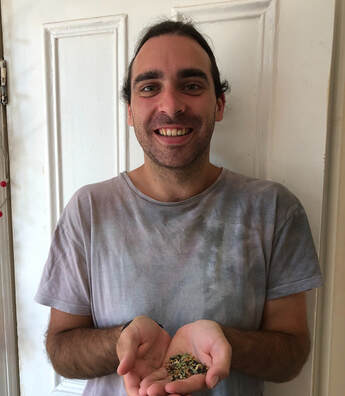 George Dunkerton is the Founder of 'A Little Cup'. George campaigns tirelessly for others to have an understanding of self care & mental health. How time & tea can be a part of our medicine & growth towards wellness. That sitting & enjoying a cup of tea can bring people together. George uplifts people with his caffeine free teas & his zest for life. George's products are available in the UK via www.alittlecup.com. He also runs online tea blending workshops which can be accessed globally. Check this man out! George writes; You might be surprised to know that as the owner of a creative tea blending company, I drink English Breakfast most days. For me, the important thing is comfort and familiarity. English breakfast reminds me of the mornings I would make tea for my mum before school because (I realise now this was strategic flattery) I “make it so well!” This was when I first discovered the importance of tea ‘offering’ - an act I refer to this as the Coronation Street effect; no matter what soap related disaster (car crash, broken window, fire) the first response is often “Oh dear - come in, let’s put the kettle on!”* It’s a very simple (and very British!) response to an issue, and it works! It is a display of support, affection and offers time to just be - something we rarely get in a world that moves so fast. When I moved into tea blending, an important factor for me was to think about ingredients that did the work of caffeine naturally - using stimulating flavours whilst remaining predominantly herbal. The key was to enable that feeling of support and rest. A combination of stimulating and calming (or soothing) ingredients can be found in each blend, and together they provide that desirable balance. But they also play on familiarity - we have a blend that references lemon and ginger (Yes Mate!); one that elevates the hot chocolate (Coco Chilli Mint); another which is a twist on an earl grey (Lemon Grey); a peppermint brew with a surprise (Daydream Believer). One just for me is the Forest Breeze - its combination of berries, eucalyptus and liquorice root always takes me back to my grandad’s sweet tin (from which we were allowed to take just one every visit) and its contents of mainly blackcurrant & liquorice boiled sweets that I adored! When I run tea blending workshops, the focus is on understanding what the ingredients do and gaining a familiarity with certain flavours. We think about how our bodies and minds respond to flavour - does this help us feel calm; does this shock us into action; does this provide stimulation; does this provide some nostalgia? The last one I have developed the most interest in. The healing power of familiarity can be quite strong - studies have pointed out how the idea of ‘grandma’s soup’ can be more healing not only through familiarity but also because of the chemical and biological connection. Food anthropologist David Sutton delves into this in his research, discussing ideas such as Commensality (the act of eating together), synaesthesia and Guatemology - the idea that there is a wide spectrum of cultural influences around the idea of taste and other sensory aspects of food. He makes a connection between biological benefit and nostalgia, arguing how much more healing a family members’ food can be because, having been literally made by their hand, it transfers useful and supported DNA amongst the food itself. And I really believe this! I’m not suggesting, however, that there is no strategy or chemistry to tea blending aside from nostalgic influence. In my workshops I always discuss the recommendation of having ingredients such as Hibiscus, Rosehip and Apple as the base for most herbal and fruit blends as they provide a stable flavour undertone. And most blends can follow the rule of 1:1 ratio for base ingredient(s):additional flavours - all information is listed in my ‘blending 101’ sheet. Other than that, I promote experimentation, which always results in an exciting concoction! But back to how flavours make us feel or heal: is there also an element of placebo to all this - perhaps? But does it matter - no! Provided we listen to our bodies and brains (we can often know what we need better than others) and apply this to what we take in then we’re onto a winner. I wouldn’t necessarily advise this for all areas of our diet - we can’t always be as indulgent as we might like - but, when it comes to tea I am in full support! This should be a moment of rest, reflection and care - without giving ourselves what we need, this cannot be fully achieved. Listen to yourself, have a little cup every day and allow that time to be kind to yourself. Love + tea x *Let’s not forget also that one of the biggest power surges in the UK is in advert breaks between tv soaps, when everyone goes to pop the kettle on ready for the second half! I know you do it too!  It’s officially autumn, I can now cheer about this … finally. I’ve not always felt like this. We all have seasons that we love & bask in, for me its summer; camping near the beach for weeks and weeks … and weeks. The children becoming more & more feral & growing in confidence, sun-kissed faces, salty hair, campfires with friends & very lose daily routines. And then autumn (feel the doom & gloom background music), for me always heralded the start of 'The Dark Time' & winter galloping towards me. How many of you know this feeling? Fast forward to a change in mindset & embracing seasonal living. By seasonal I mean, the natural rhythms of the year, the months, the weather & the necessity of these patterns for us & the land. Don’t get me wrong, it’s still tricky for me, but the easiest way to navigate through autumn and prepare for winter is by Practicing Self-care. Yes, making time, for some of us its carving out time, to do things that make us happy & engage our endorphins or calm our minds. Here are my top self-care joys & tips. 1. Get in it, get out there. Oh yes, put your boots on, pull on a coat get outside for some Nature Bathing. In your garden, park or on a walk, be present & really focus on what nature is doing, the colour changes of the trees, the air as it hits your nose, your mouth & your lungs. Kick the fallen leaves like you’re still a kid, hear that crunch? Take photographs if it’s your thing. An autumn walk is a time to slow down, to reflect, to make plans & most importantly to be in your moment. The Japanese prescribe Shinrin Yoku or Forest Bathing all year round as a part of their mental wellbeing & as a part of their preventative health care. 2. Cook, Bake, Nourish Changing seasons equals changing the food we eat. This seems like a lot of common sense, but with supermarkets offering the same fruit & vegetables all year round, its hard to think seasonal food when we’re not sure what actually is in season? I always advocate eating local & eating as seasonally as possible. This doesn’t mean swapping out salads, but it does mean ‘reinventing’ them. Counteract the cooler temperatures by warming cold food up; hot salads, spicy smoothies, seasonal veg juices with garlic. And remember how much fun baking is? There is something satisfying about chard & feta muffins coming out of the oven or a banana loaf or a spiced apple cake. Salivating just thinking about these baked goods! I’ll be posting my autumnal favourite recipes over the next few days. 3. Autumnal essential oils There are some essential oils that just smell superb in autumn. Why? Because they are warming, they are evocative of nature, happy memories & thoughts & they have a cleansing element to them. My autumn go too oils are bergamot, orange, patchouli & eucalyptus. Others that tickle the senses are sandalwood, cinnamon & nutmeg. Try adding peppermint & teatree oils to a thick body lotion or body butter & applying to tired feet. 4. Soak in a bath The luxury of soaking in a bath is something that I have to make happen. I’m a shower kind of girl, wash, dressed, ready. But I love the ceremony of running a bath, lighting a candle or reading a book & adding those essential oils which make my body sigh. For relaxing oils, I love lavender & ylang-ylang, 5 drops of each. 5. Sort out your wardrobe Summer is ebbing & its time for a costume change. Get out & go through your warmer clothes. Sort out what fits & doesn’t from last year, what you still like & don't, re-heal your boots & dry-clean coats. Look at what needs to be added to your wardrobe; things which will make you feel confident, comfortable & happy. A wardrobe declutter & reorganisation is something I need to be in the mood for, but once it’s done the satisfaction is enormous. I donate to second hand shops or clothing collectors, recycle old shoes & feel like I can breathe a sigh of relief at the space I’ve made. (NB. Beautiful items that I can’t part with but will never wear again I have packaged into boxes for my daughter to rummage through when she hits her teens). Autumn also inspires me towards different colours, I like that. 6. Get Creative! Need a break from the tech & the tv? Autumns a great time to get creative & learn a new skill. Don’t laugh, I’ve taken up knitting. A long way to go before I get a perfect cardigan, but the family will be equipped with new scarves by Christmas. The children have found an origami book, I feel like there is a lot of paper folding fun coming my way. But seriously, think about taking up or restarting a creative hobby that you are rewarded by. 7. Celebrate With all of the above tips & moments of self-care it's also important to recognise that every season has its celebration. Autumn’s celebration is Halloween or what our ancestors called Samhain. Traditionally, this is a day to feast now the harvest is in, play games & make merry. For me these markers in the year are important. They acknowledge the time, the season & are great fun. They are also a tipping point of foods ebbing and changing & nourishing ourselves for the season. For our family, its feasting & trick or treating with the children. For me, it’s a personal meditation & feelings of gratitude for all that I am, have & will be. I hope these ideas around autumn self-care have inspired you to make time, create, organise and be a part of the rhythm of the season. Remember, autumn is the start of the rest time. Take time to relax & regenerate after the summer. Nature does. What does self-care look like to you?
In a world where women are the very lynch pins of the home & the family. Where women often work full time & co-ordinate child care & children’s activities, care around older parents & manage a lions share of the household cleaning and food, what does self-care look like? When my two youngest children were born, I was in my late 30’s. My husband left the house at 7 & returned 12 hours later. Every second weekend, we had our oldest children with us, my stepsons. My family were in a different country & I felt absolutely overwhelmed with sleep deprivation, the relentlessness & the love I felt for my babies & also the drive to clean & cook. What would I tell that younger me now? “Make space for self-care, it doesn’t have to be a huge chunk of time, but something for you”. Fast forward 10 years & my older boys are men, my 10-year-old is nearly taller than me & my 8-year-old daughter is sassy & kind. They can all cook a meal (give or take) & we talk about energy & time to do a project or complete something. We all make space for self-care. Don’t get me wrong, in the years between babies & now, we have delt with grief, with long haul travel because of ill parents, of house moves & career changes. Self-care has had to shift in time taken & even what it looks like. But it is necessary. What keeps me ‘medicating’ with self-care is, if I fall to bits, then my family struggle. I understand I am one of the lynch pins in our small team. I take time to read a book, to sew, to infuse oils & make balms, to simply put flowers in a vase & walk my dog. Why? Because it makes me happy. I am not last on my list of people; I am equal & deserving. xPaula  With the onset of Spring, our spirits lift and things ‘seem a little brighter’ and they really are. In September, I wrote about the Autumn Equinox and the energetic changes most people feel - a contraction of energy and the need to hibernate and to be snug at home. With the Spring Equinox on Monday, the (20th March 2021), this energy has changed direction! It’s started moving up the chest and over the head and shoulders and down the back giving us the feeling of expansion (and often relief that winter has passed). This shift welcomes a feeling of POTENTIAL in daily life and optimism as our days are longer and we are full of new ideas – lets take up a hobby, start an evening class or sport, catch up with friends, possibly move house or change job, book that adventure destination – that fabulous Spring feeling. Spring (the Chinese Wood Element) is associated with green colour and resonates with sour and tangy foods. These cleanse the palate and are readily available. Spring brings a bounty of vegetables, which are light in texture, grown above ground (thus harnessing the energy of the sun), full of chlorophyll and a rainbow of colours. Instead of our heavier and nourishing winter casseroles and soups our bodies and taste buds opt for lighter food such as leafy salads, vegetable croudites, spirilized corgettie and quick stir-fries. To nourish seasonally reconnects us to the rhythms of the earth. Despite busy lives and long working days, this is a simple way to regroup and feel better in ourselves. The adage, ‘a spring clean’ doesn’t just refer to the house, but also ourselves. Many people come into Spring and quickly catch a cold or have a cough that will not budge. Skin complaints can flare up or feelings of sluggishness and being unhappy can be difficult to move. This is all associated with the body undertaking a natural detoxification. Moving out sluggish winter mucus and stagnant lymph via the lungs, the skin and the gastro-intestinal tract. The organs associated with Spring are the liver and gall bladder and after a winter of contracted energy, these can be overloaded causing health and emotional flare-ups in unexpected parts of the body and feelings. If these sound familiar seek advice from a Nutritional Therapist. Great spring and early summer vegetables to watch out for and there benefits are; Asparagus contains more folic acid than any other vegetable. It’s a good source of fibre, potassium, vitamins A and C and glutathione. Beetroot loves the liver and kidneys. It is high in manganese, potassium and vitamin C. A great supporting food to ward of the colds and coughs of Spring while also supporting the liver and kidneys while it naturally detoxs. Broccoli is flavonoid rich and has anti-inflammatory properties. It is high in vitamins C, A and K. Unsurprisingly it also helps the body to detox with a specific combination of phytonutrients. It is a super food of the first order! Purple sprouting broccoli contains vitamins C and A and is a source of caretenoids, iron, folic acid, calcium and fibre. The photochemical sulphoraphane is thought key in cancer prevention and a resistance to heart disease, osteoporosis and diabetes. Fennel aids digestion and is high in iron, manganese, magnesium, calcium, zinc and Vitamin K. A great immune boaster and good for bone health. New potatoes are sources and vitamin C. Radishes are considered to be another cancer deterrent and have significant levels of vitamin C. Spinach is full of vitamins A and C and folic acid. It’s also high in iron and calcium. Spring onions are high in flavonoids (another cancer and heart disease preventative), also vitamins B and C. Use your food to nourish your body and harness the Spring energy. Use the Spring energy to detoxify and move on from the Winter. 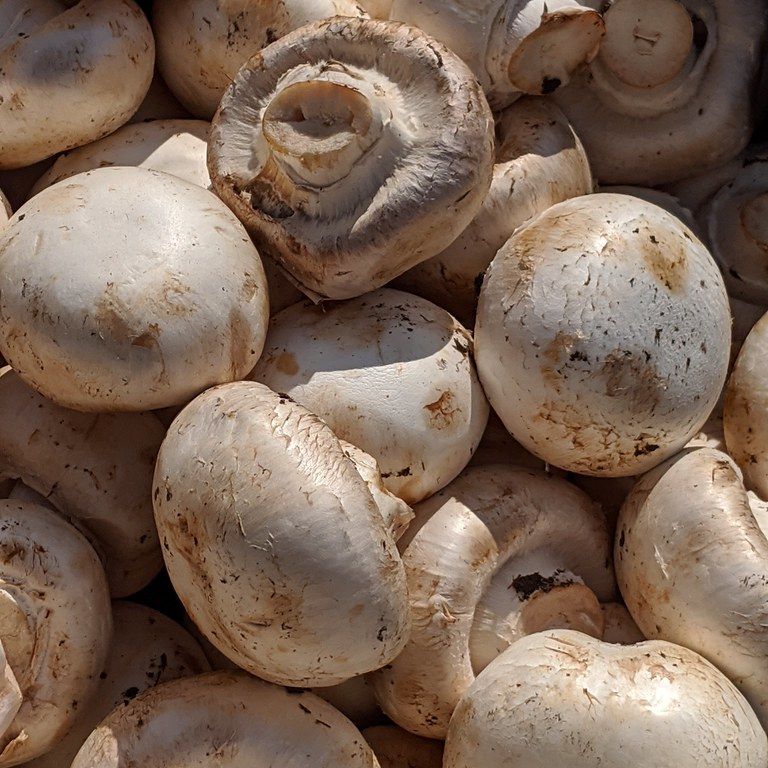 Incredibly, mushrooms constitute approximately 14,000 different plant species. This beneficial fungus is high in selenium, copper and vitamin B, so important in treating and managing stress, exhaustion and chronic fatigue. But mushrooms (shitake, Reishi and others) have been used medicinally in Asia for centuries to support the liver, to boost immunity and for their anti-inflammatory properties. More commonly known in the West, the button, white, chestnut and Portabella mushrooms also have health benefits. Shitake, otherwise known as the ‘king of medicinal mushrooms’, is truly versatile. It is widely acknowledged in hepatic health as supporting liver function and protecting the liver. The liver processes and filters all the body’s blood. It works hard to detoxify. This impacts on inflammation (and its movement as vs. being stored in joints) throughout the body. It is now being used in the treatment of arthritis, gout and rheumatism. Given its impact on inflammation its not surprising that it also supports vascular health and circulation. It is high in vitamin B, so important to adrenal function and a healthy metabolism. As mentioned above, vitamin B is also used to treat exhaustion, chronic fatigue and stress related illnesses. Does it get any better? Yes it does. The Reishi mushroom is beautifully named ‘the mushroom of eternal life’. This is primarily because it regenerates and detoxifies the liver. Consequently, a healthy liver produces well-filtered blood, which is re-circulated through the system. The Reishi supports immune health and is particularly affective against viral infections such as herpes. Used in Asian and Western societies as an anti-inflammatory, it inhibits histamine production and is used in the treatment of mucosal and skin allergies. Benefits have also been seen in cases of fibromyalgia. While shitake and reishi mushrooms need to be sourced from specialty shops (sometimes dried or in powdered/capsule forms), the mushrooms that we are most familiar with - button, white, oyster, chestnut and Portobello, also come with their health benefits. Like their Asian counterparts they are high in vitamin B, used in stress and exhaustion, as well as adrenal and thyroid health. They have a balanced and equal amount of copper and selenium and a good amount of potassium per 100 gram serving. They are a good protein source (particularly for vegetarians and vegans) and are high in dietary fibre, always great for bowel health. Oyster mushrooms are anti-inflammatory and reduce joint pain and muscle fatigue. They are high in iron and useful in cases of anemia. Button mushrooms are proving effective with hormonal rebalancing and may prevent hormone-influenced cancers as estrogen blockers. Mushrooms of all fungal types absorb ultra violet light from the sun and store it as vitamin D, specifically vitamin D2, D3 (best used by us) and D4. Consumed, we can then utilize this vitamin D helping with mood balance, bone density loss and lower the risk of heart disease. Put your mushrooms on a sunny windowsill before eating them. Mushrooms have been used to treat cancer in China for centuries and are becoming more acceptable here for the same use. Used in conjunction with cancer treatments, as preventative cancer medicine or as a stand-alone option, mushrooms are considered an ‘anti-cancer food’. This means certain mushrooms can inhibit tumour formation, protect DNA and stop cell mutation. For more information, please consult a practitioner. The mushroom IS a beneficial fungus; it tastes great and can act as preventative medicine and natural medicine to secure our optimal health. It’s an easy fungal win/win 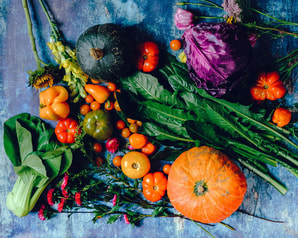 A huge volume of micro-minerals and vitamins stored by the plant! I love the synergy of vegetables and fruit. By this, I mean the skin, seeds, flesh and all. The pumpkin and squash family show this beautifully. Roasted pumpkin in its skin is tasty and full of textures. Roasted pumpkin seeds added as a snack or on a salad are delicious and BINGO the whole vegetable has been consumed with all of its nutritional benefits – zinc, beta-carotene and omega 6. Seeds can be likened to a power pack! Singularly, a seed has produced a plant, a flower, a specific vegetable and therefore more seeds (for the next generation of plant or our consumption). The flesh is fibrous, flavoursome and nutritious. And the skin, this is where we see Clever Food - just under the skin a majority of nutrients and photo-chemicals are stored. Potatoes and their skins are another great example of how consuming the entire vegetable can give us so much more (and reduce household waste). The skin (and just under it) is rich in zinc, soluble fibre, vitamin C, potassium, iron and zinc. A quick nutritional win is to roast, mash, stuff, chip or wedge your potatoes with skins and eat. The same can be said about eating the stalk of the broccoli as well as the florets. The leafy surrounds of the cauliflower and carrot stalks. Chopped finely these last two can be mashed or added to a curry, soup or casserole etc. As we can see, Nature has provided us with food that harnesses the nutrients from the soil, the weather and the water it is fed – The slogan, ‘Food is what It eats’ springs to mind. If we grow produce in an organic, magnesium rich soil we will produce organic, magnesium rich food. And the opposite is also correct. If we harvest fruit and vegetables from a soil conditioned with commercial fertilizers and pesticides, they too will be rich with these chemicals. There is some common sense to this for example, grated citrus rind is fabulous for flavouring but difficult to consume otherwise. So, how best to eat our produce. If it’s organic, eat it all (or as much as possible). If it’s not organic, peel it (by removing the skin, we also remove some of the stored chemicals). If its soft fruit or vegetables like strawberries, blueberries, grapes, stone-fruit and mushrooms, eat organic. Nature provides whole food; it depends what we do with it as to whether we eat whole food.  Feeding children can be a tricky business, but this has worked for me. My fabulous kids are now 7 and 9 years old. I breastfed them both, they both went onto solids using the baby led weaning method (I couldn’t face pureeing), they have been fussy eaters, they like repetitive meals, we do not ‘cross contaminate’ baked beans with anything (unfortunately, they’ve inherited this from me) and today they each like different food but will eat most food. How did we get to this point? Three strategies have worked for us; these are eat seasonally, offer fruit and vegetables first and literally, ‘tell it like it is’. Eat in the seasonal rhythm of what is available. I am a huge advocate of eating locally and seasonally. Why? Because nature produces what our anatomy and physiologies need at the right time. In summer, soft berries and light leafy greens are refreshing and uplifting while in autumn tart snacking apples and hearty pumpkin risotto are nourishing and filling. Eating in season often doesn’t cross our minds at the supermarket. We buy the same fruit and vegetables every week. Why? Because that’s what the children will eat, that's the family routine. Change it around, as a family choose to buy and eat what is grown right now. This is easily explained to kids if you have a garden or small space to grow veg (or a veg), talk to them about planting, growing and harvesting. Children quickly understand that ‘this is the time’ for autumnal squash, winter chard, spring cabbage and summer lettuce. Alternatively, join a seasonal vegetable box or bag scheme and love the surprise every time you and your kids open your box. Offer fruit and veg in many different guises. Some people can’t stand cooked carrots but will eat them raw, others won’t touch stewed or compote fruit but will eat it raw. I strongly dislike anything strawberry unless it IS a strawberry. If your children are ‘fussy’, try something different. Some children won’t eat cucumber, peel it and they will. Eat as a family as often as you can, it really does encourage children to try different food. My son now loves courgettes, my daughter can manage a slice. But its perseverance and mirroring eating habits that is helping. You can also pull out the big guns, “now that you’re 7 you might like to try … beetroot?”. Tell it like it is – talk to your kids about food. Children really do understand when it’s explained to them. “It’s bad for you” is NOT a conclusive argument when dealing with anyone, let alone a smart under 10-year-old. Educate them with conversation, look at the colour, describe the crunch or squishiness and the flavour. When they’re little, this can lead to hilarious chats “Mummy, that banana is too squishy, but it tastes soooo sweet”. Great scientific analysis small person! And as they get older and start asking for crisps, sweets, biscuits and a sandwich several times a day, the conversation continues … “sweet things make your body feel really excited for ages and too close to bed time and you can’t sleep” … “sugar makes me skin feel gritty” … “salty things make me thirsty and I want more and more crisps and can’t stop” … “more than two slices of toast makes my tummy feel sore and soft (bloated)”. I never deny my children food groups because forbidden becomes highly desirable, but I do place limits and suggest a piece of fruit or veg first. Crisps in our house are considered a zero-value food as they don’t fill you up, BUT they are available because sometimes they’re a nice to have. As the children are getting older, they ask for them less and less. Hungry children will eat. Children’s taste buds also mature as they do. Offering a wide range of seasonal food and keeping the zero-value food to a minimum means it’s not on their radar to ask for it. As we become more in tune with what is grown seasonally, it becomes second nature to eat what is available. Plus, its exciting “owwwww, plum season, plums are there sweetest when there’s a glut and then they’re gone". Tell children why, they’re young but not stupid. They get it.  We have danced through a summer of children’s holidays, evenings with friends, festivals, beaches and BBQ-ing through the weekends. Now the season changes again with Autumn crisply in the air. In 2021, the Autumn Equinox in the Northern Hemosphere falls on the 22nd of September and offers great potential for change. Equinox means ‘equal night’, when our day and night are (pretty much) 12 hours each. It is the meteorological measure of the first day of Autumn. To harness the energy of this Equinox we must stay focused and connected with what our bodies are telling us … this is often ‘go more gently’ after the summer. The energy of Autumn is grounding and contracting as the land around us prepares itself for winter. The Equinox’s energetic change also heralds a change in health. As a Nutritional Therapist, at this time of year I see a rise in cold and flu symptoms, tummy upsets and rashes. This can be the body naturally detox-ing the lymphatic system. Allowing elimination out through the skin, the bowels and mucus membranes and just making us stop and slow down in our busy lives. A bad cold or flu should put us to bed to rest and recover. How best to support ourselves in this time? Hydration is key! This is not only drinking water, but also the way the body absorbs and uses hydration, right down to its movement in and out of the cells. Broths and herbal teas are extremely useful to support hydration, while caffeine and alcohol are not. Match your eating to the season. Eat locally produced vegetables and immediately reconnect with the season you’re in. The Autumn Harvest is rich with the last of the vine vegetables, an abundance of root vegetables and the more bitter of the leafy greens. As our digestive systems slow down in the cooler months, tomato soup, cooked carrots, squashes, onions, garlic and potatoes are easy on the gut to absorb. Kale, chard and leeks encourage the digestive enzymes into action. What is the quality of your food? Look at the levels of preservatives, sugar, salt, trans fats and pesticides that maybe hidden (or quite transparent) in your meals. By reducing these and swapping to organic fresh produce, we remove a stress from gut and a chemical load that has to be processed elsewhere. And of course, to just slow down and enjoy our moments. Keep the balance of family life, work, exercise and personal space. Breathe out the ‘hard stuff’ and breathe in the calm and the fun. The Autumn Equinox can be a physical and emotional challenge or it can be a time to refresh, restock and rearrange ourselves for the colder months. The potential is always ours to fulfill. |
AuthorPaula is an avid writer and enjoys working with food and words. Archives
August 2022
Categories |
Proudly powered by Weebly


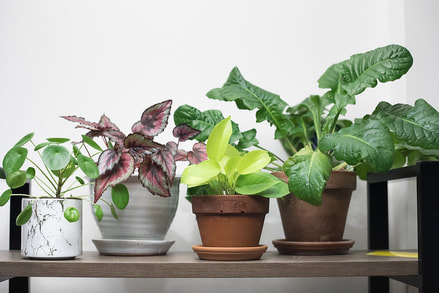
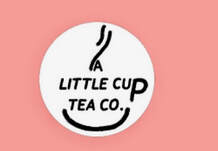

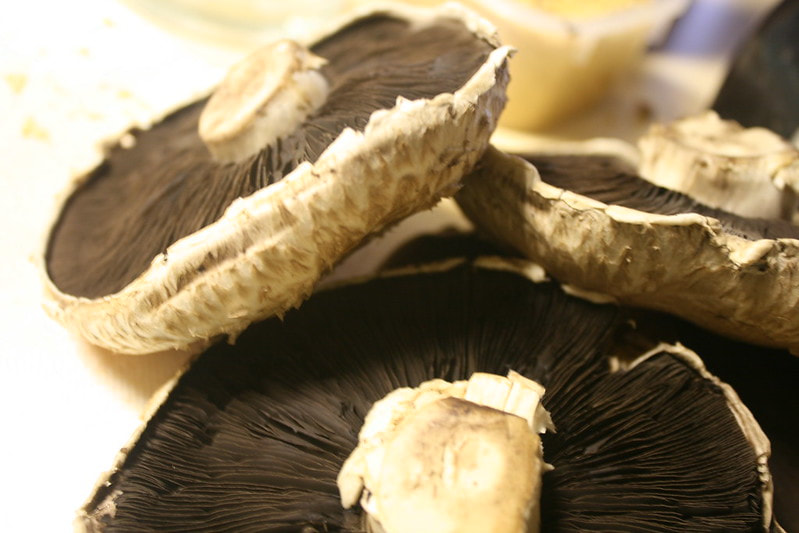
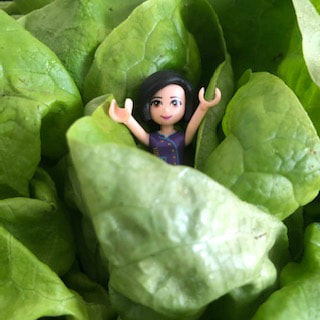
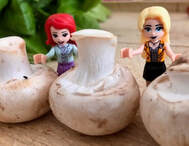
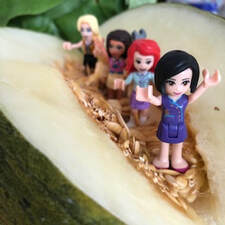

 RSS Feed
RSS Feed